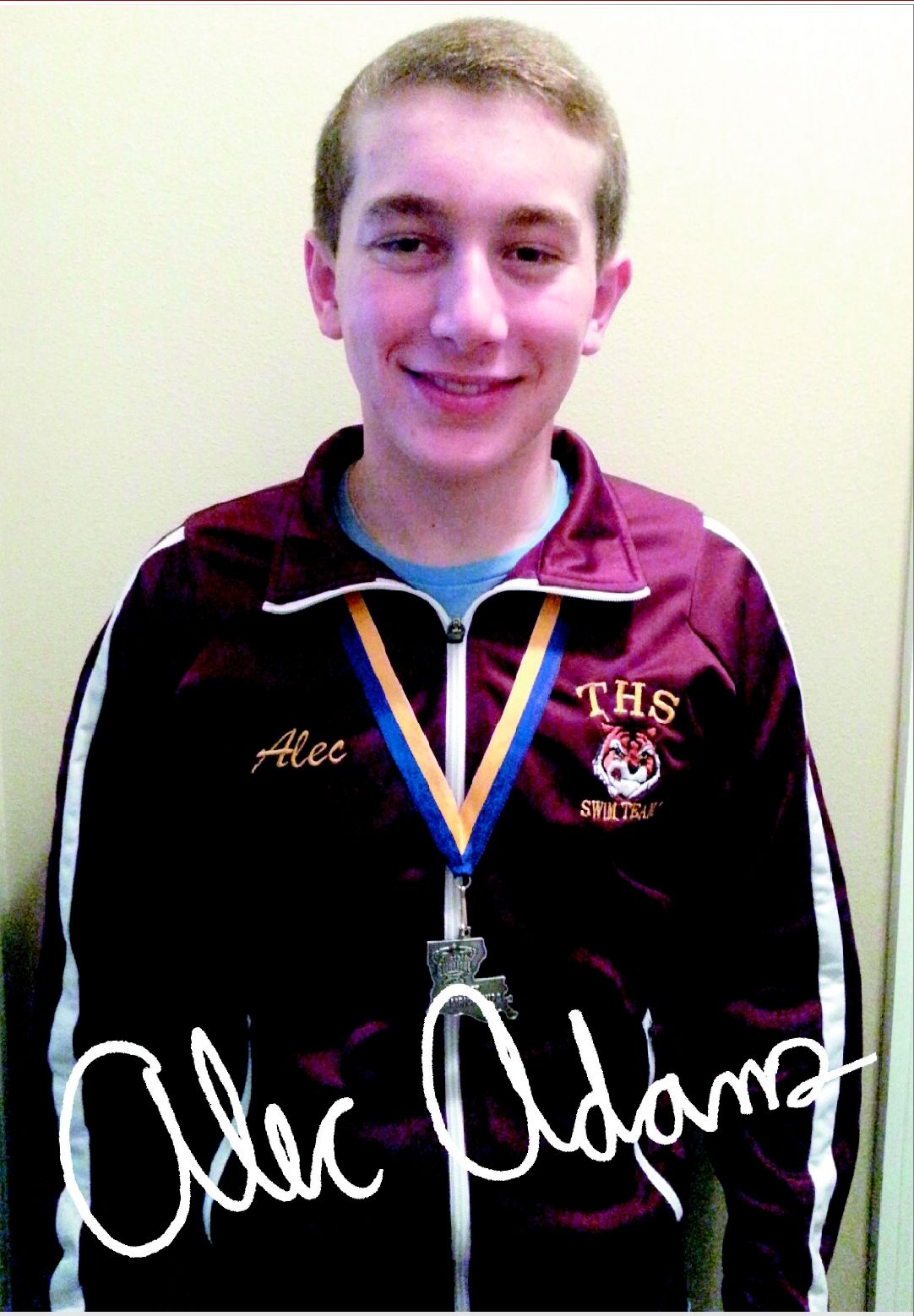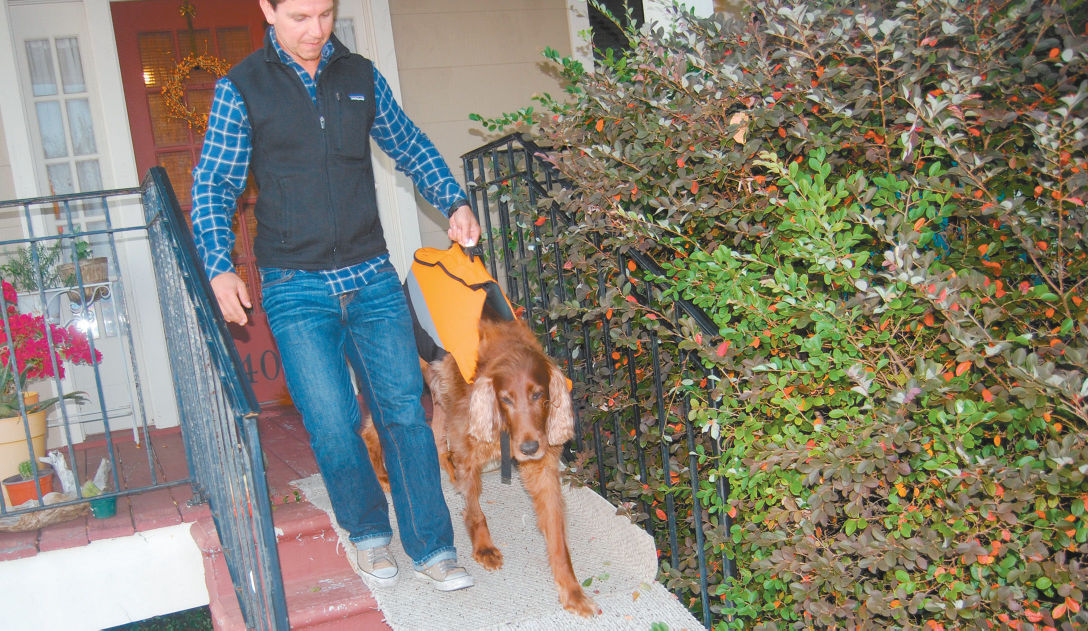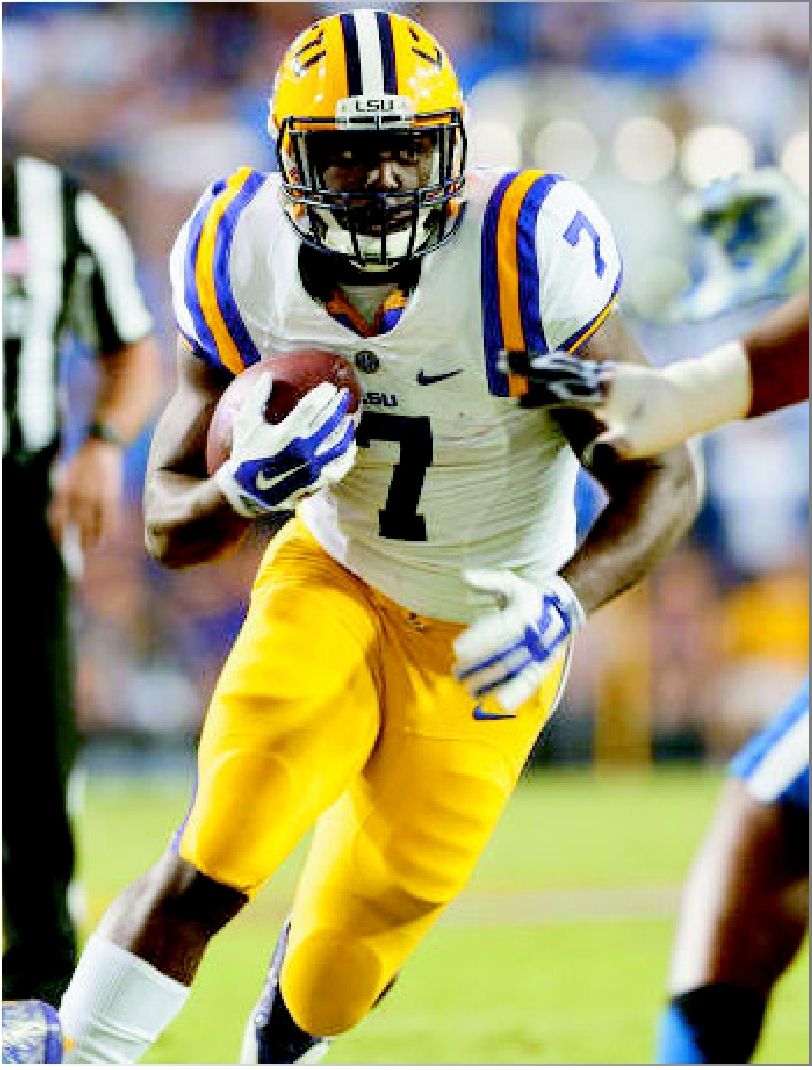
Setting Sun
December 11, 2014
Alec Adams
December 11, 2014Dog owners beware because bone structure and make up could put dogs at risk for knee injuries.
The anterior cruciate ligament, more commonly known as the ACL, is one of the worst and most common injuries in sports.
More than 60 cases of ACL tears occurred last year in the National Football League.
Heading into this year’s NBA season, Bulls point guard Derrick Rose had only played in 49 of 164 games the last two seasons as a result an ACL tear. After having it surgically repaired, it only took 10 games before he was out of commission again.
However, athletes are not the only ones susceptible to ACL tears.
Dogs are at risk of tearing the ACL by simply getting up and walking to their water bowl.
Duke, an 11-year-old Irish setter, tore his ACL while on a walk with his owner Chloe Dean, of Golden Meadow.
“I had no idea he tore it. He was walking, and then all of sudden he wouldn’t put any pressure on his leg. My first thought was he could have sprained his ankle or stepped on something. I never thought it was a torn ACL,” Dean said. “After two days of that, I took him to the vet. At first, I thought it might have been his arthritis hurting him. They did some X-rays. She referred me to a specialist [MedVet Orthopedic Surgeon] Dr. Jennifer Lang thinking it might be his knee.”
In an interview with The Times, Lang was asked how many times she sees the injury each year.
“I can’t even tell you how many times I see it a year,” said Lang, who has been practicing veterinarian medicine for more than 12 years. “We probably see between 10-15 of these per week. The number of ACL tears surgeons see is massive.”
ACL tears are more common in larger dogs than smaller dogs because of how the bone structure is made.
“It has to do with the makeup of the fibers in the ligament and how the bone and knee fits together,” Lang said. “Some dogs are put together in such a way that it predisposes them.”
According to Lang, the most common breed subject to a tear is a Labrador retriever; greyhounds are the least likely to tear it.
For pups that tear their ACL, surgery almost always follows.
“Almost always, dogs need surgery to stabilize the knee after tearing an ACL. The problem is once they tear it is that the knee becomes unstable,” Lang said.
“The way the body addresses that is that with time it leaves down scar tissue to try and stabilize it. It doesn’t ever work very well. They always have a little bit of motion loss because they lose a lot of mobility in that joint, especially if the knee isn’t stabilized.”
There are two surgery options for pet owners. Smaller dogs will typically receive a lateral suture.
“It creates somewhat of a prosthetic ligament on the outside of the joint rather than the inside of the joint,” Lang said. “You can just use a large piece of suture to help hold the knee stable. It is not really a prosthetic ligament. It just acts like one. Prosthetic ligaments don’t work very well in dogs. We are trying, but they don’t work very well yet.”
For larger dogs, osteotomy procedures are done.
“Those procedures involve cutting bone and moving things around to help stabilize the knee,” Lang said. “The whole goal is to stabilize the knee.”
In Duke’s case, Dean – after consulting with Lang – chose the suture method due to his age and arthritis because the risk for the major surgery is much greater.
“If they did the major surgery and he slips and fall, that would break his leg and put him in a worse position,” Dean said. “With the brace, if he slips and busts the brace, he at least isn’t hurt anymore than he would have been originally. He is back to a torn ACL and not a broken leg and a torn ACL.”
After the surgery, Duke was confined to a small area for six weeks, whether it was a room or space.
“When he goes outside, he has to be on a short leash. He can’t really go on walks or anything,” Dean said. “He was not walking around at all for the first couple of weeks.”
Dean and her husband, Robert, began helping Duke rehab after the surgery.
“You have to take his leg while he is lying down and move it around, kind of like natural movements,” Robert said. “You have to take his leg and move it forward and bring his knee up to his chest. You also have to pull his leg outward some so it doesn’t get stiff.
“We do that daily at home,” Chloe added. “At first, he didn’t like it. As it gets better, you can do more motion.”
Two weeks after the surgery, Duke was able to stand up hop around on his own for a bit.
“When he walked, we had to hold him up because he was basically walking on three legs so you don’t want him to slip,” Chloe said.
The Deans use a vest with a handle on the back to hold him up. One of the biggest challenges was getting him outside because their house is elevated with stairs.
Robert built a ramp so Duke would be able to walk up and down with help, of course.
The injury has not kept the playful Irish setter in a funk because he still wants to run around with his family even with the battered knee.
“He is 11 years old, but still acts like a puppy He is very happy and playful. He is active,” Chloe said. “He follows us around. He never wants to be alone.”
Golden Meadow resident Robert Dean helps his 11-year-old Irish setter, Duke, navigate the front steps of his home. The canine recently underwent surgery after tearing his anterior cruciate ligament, more commonly known as the ACL. “My first thought was he could have sprained his ankle or stepped on something,” owner Chloe Dean said. “I never thought it was a torn ACL.”
Torn ACLs are common among canines, according to Dr. Jennifer Lang, a MedVet orthopedic surgeon. “We probably see between 10-15 of these per week.”












